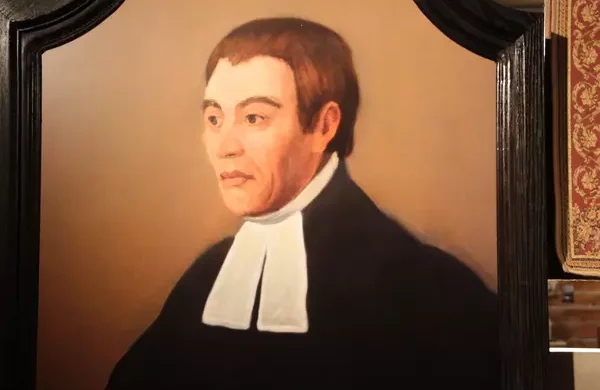
Lutheran Bäffchen or Clergy Collar
Clergy Collar made from linen 19th Century – a clergy collar with bands.
Liturgical vestments and altar hangings play a vital role in Christian religious services. Enhancing the worship experience with an extra layer of meaning and symbolism. Priests and pastors commonly wear liturgical garments such as the chasuble and the Alb during Mass celebrations. With the chasuble covering the body and often featuring ornate designs and symbols. And the Alb, a long white robe, worn by priests. Another liturgical vestment, the stole, a long, narrow scarf-like garment worn around the neck. Usually decorated with symbols representing the liturgical season or occasion.
On the other hand, altar hangings, and decorative textiles adorning the front of the altar, add beauty and meaning to the worship ceremony. They can be changed according to the liturgical season, with common types including frontals, superfrontals, and lectern hangings.
Liturgical vestments and altar hangings have a rich tradition and symbolism. Connecting worshipers with the history and traditions of the Church. Each vestment and style carries unique meaning and significance. Ecclesiastical Sewing addresses the liturgical needs of churches and religious organizations. Offering a diverse range of quality vestments and church hanging patterns, from traditional chasubles to functional superfrontals. We always have the perfect item for your liturgical preference.

Clergy Collar made from linen 19th Century – a clergy collar with bands.
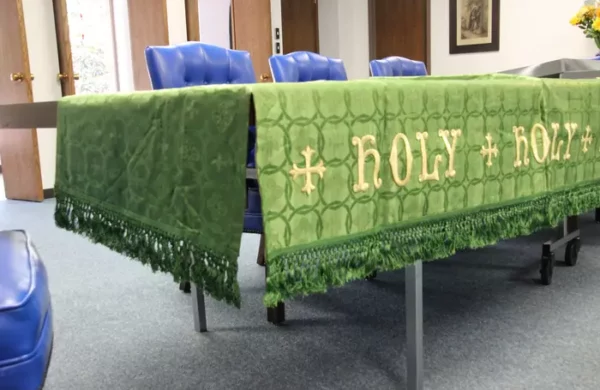
The Ecclesiastical Fabric has been used as the base fabric for the entire Superfrontal. The Superfrontal is designed so that it extends to the back edge of the altar with no overhang down the back side. This same style of superfrontal could be created using a cotton duck or dowlas fabric for the decking and using the Ecclesiastical Brocade on the front and end pieces.
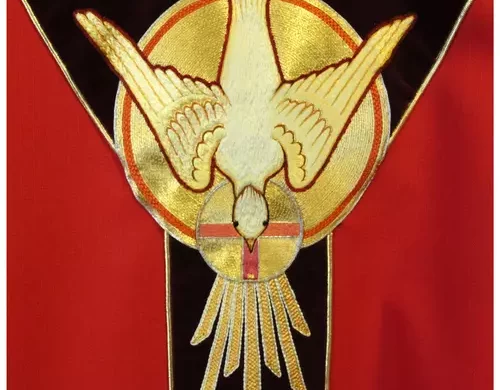
At O’Fallon Monastery, the Sisters created a special vestment collection, including this chasuble with a traditional Dove symbolizing the Holy Spirit on Pentecost. The design blends hand and machine embroidery, using silk and gold threads for a beautiful finish.
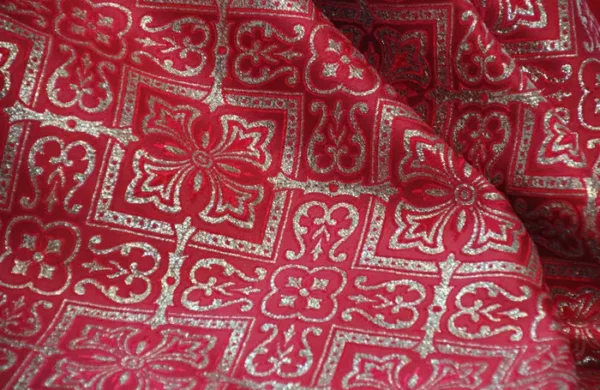
Red is the traditional color for use during the celebration of Pentecost, which comes fifty days after Easter, and 10 days after the Ascension of Christ.
The chasuble, known as the Westminster Vestment, is part of the heritage collection of Ushaw College, the former Catholic seminary at Ushaw Moor, near Durham.
An embellishment of the amice with embroidery is traditional, most often having a cross at the lower edge, or in the center of the back.

Ecclesiastical vestments are essential for clergy in both the Catholic and Lutheran traditions. Basic items include stoles in liturgical colors, cassock, alb, and surplice. A cincture is worn around the waist, while the amice is optional for Lutherans but essential in the Catholic faith. The chasuble, recommended for Lutheran pastors, matches basic stole colors. In LCMS, a tippet, a black stole variation, is used for prayer office in choir dress.
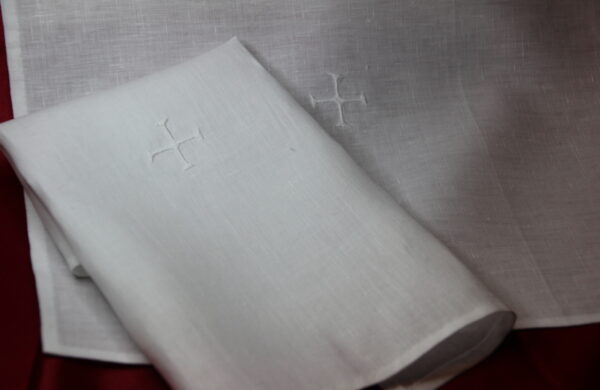
The altar linen project for King Richard III was spearheaded by Elizabeth Morgan who was contacted by Leicester Cathedral and coordinated the making of Fairlinens: palls, purificators, lavabo, corporals, and other linen items as needed for a new altar being installed in Leicester Cathedral for the service.
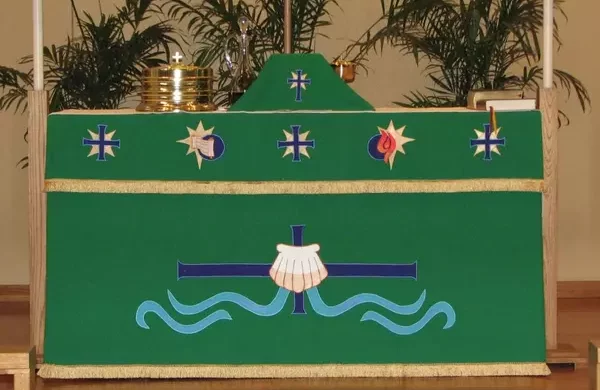
With a growing collection of beautiful altar hangings, and hopefully, a growing collection of matching vestments, the issue of storage must be addressed to properly care of Ecclesiastical Vestments.
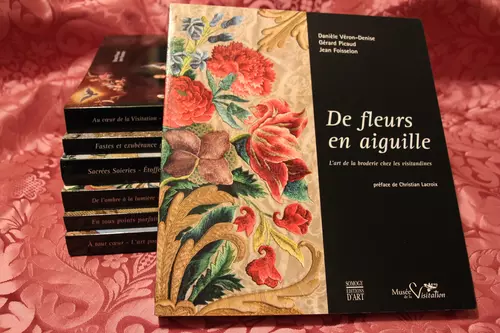
Visiting the Photo Galleries available on the Museum website offers a glimpse at many beautiful pieces of Ecclesiastical Embroider and Ecclesiastical Sewing. The orphrey on the cope in the above photo has some wonderful figure embroidery. The top figures are Mary (Mater Dei) and Joseph. St. Francis is on the lower right, but the watermark blocks the name of the final figure. The work is a very beautiful example of figure embroidery.
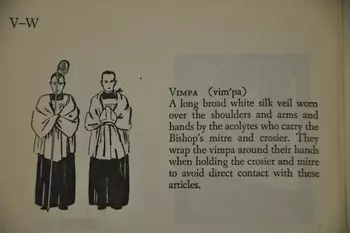
The Coat of Arms of Scharfenberger is embroidered on his vimpae. A gift to the Bishop from the Extraordinary Form Community of Albany.
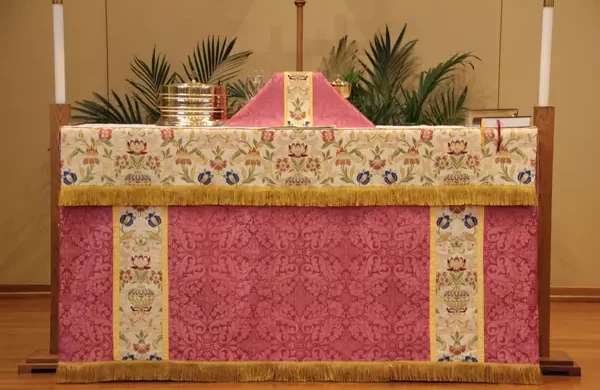
Using Rose Vestments during Advent and Lent varies among differing church bodies. The New Liturgical Movement has some information on the historical use of Rose Vestments within the Catholic Church. The Lutheran Church Missouri Synod’s view on Rose Vestments is slightly different. If a Rose Vestment Set is desired or planned for your church, be sure to check with your pastor or bishop concerning appropriate use and guidelines for liturgical colors.
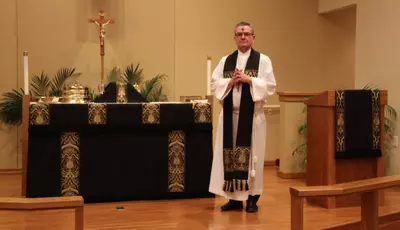
For this altar frontal, the plan is to use two 7″ orphrey bands on either side of the center front. There will be a solid space of white that will be about 9″ wide left between the orphrey bands. This band or space that was left would be adorned with a host of hand-embroidery designs. The project will have to be content with plain bands of white between the rows of orphreys.
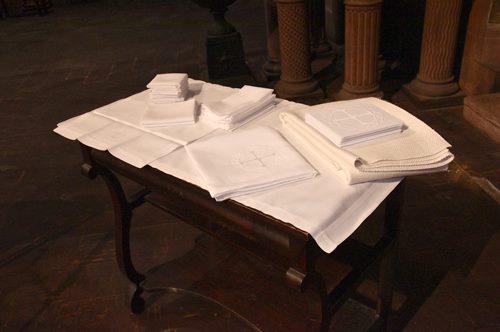
Making altar linens for the King of England – a very special project, coordinated by Elizabeth Morgan. Ecclesiastical Sewing small role in a historic event
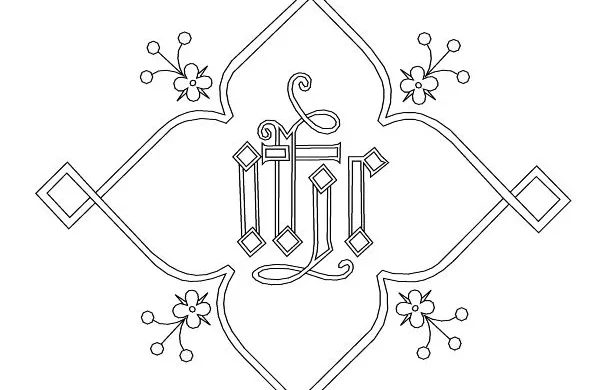
Merge three vintage Ecclesiastical Embroidery Designs into a versatile artwork. The simple lines make it ideal for whitework, but it seamlessly transitions for gold and silk Ecclesiastical Embroidery. For whitework, consider stitches like stem stitch, outline stitch, and padded satin stitch for letters. Alternatively, use outline stitch with seed stitch fill. Chainstitch is another excellent choice for whitework in Ecclesiastical Embroidery.
You must be logged in to post a comment.